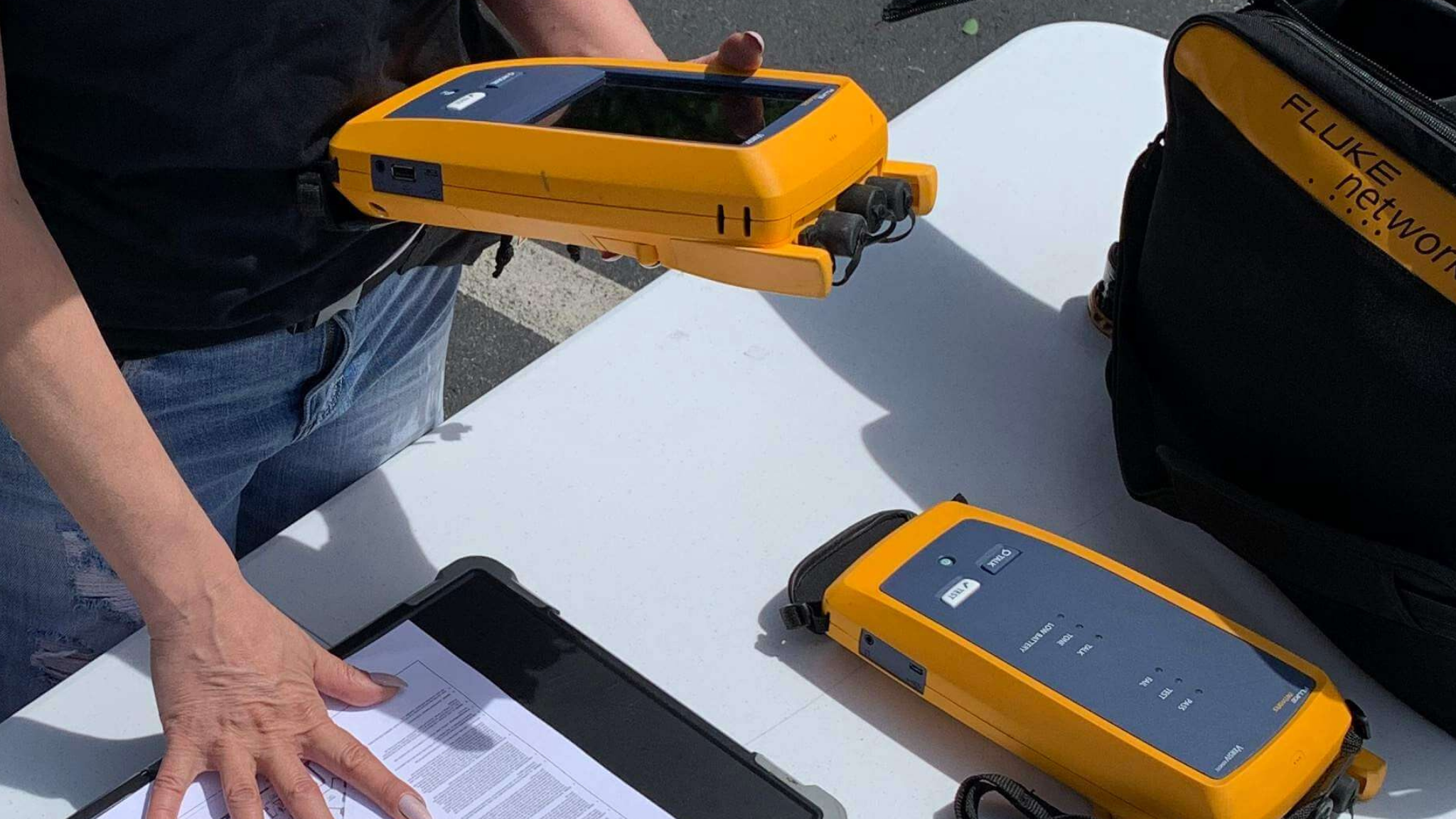Prevent 911 Outages with Stronger Fiber Optic Cabling Networks
In July 2025, two separate incidents—one in Florida and another in Pennsylvania—caused temporary 911 system failures. Both were linked to network vulnerabilities, and in Florida’s case, the culprit was a cut fiber optic cabling line.
These events were short-lived but serious. They serve as a reminder that critical infrastructure depends on stable, well-managed cabling systems. So, what exactly is fiber optic cabling—and why is it so vital to everything from public safety to business operations?

A Fiber Optic Cabling Interior
What Is Fiber Optic Cabling?
Fiber optic cabling is a high-speed data transmission method that uses strands of glass or plastic to send signals via light. Unlike traditional copper wires, which rely on electrical pulses, fiber optic cabling transmits light through thin fibers, allowing information to travel faster and across greater distances with less signal degradation.
A single cable can contain dozens—or even hundreds—of these fibers, each capable of transmitting massive amounts of data. This is why fiber is the standard for internet backbones, emergency communication systems, hospitals, and enterprise networks.
Core Components of Fiber Optic Cabling
Understanding how fiber works means understanding its components:
-
Core: The center of the fiber where the light travels.
-
Cladding: A layer that reflects light back into the core, maintaining the signal.
-
Buffer Coating: Protective material that shields the fiber from moisture, damage, or bending.
These layers make fiber optic cabling strong in performance but often delicate in structure, which is why physical damage remains one of its biggest threats.
911 Outages in 2025
In July, Lake County, Florida experienced a 911 system failure caused by an accidentally cut fiber line during construction in Leesburg. Just days later, Pennsylvania saw a more widespread 911 outage statewide. While technical investigations are ongoing, both cases point to infrastructure issues involving fiber optic cabling or digital networks dependent on it.
These weren’t just internet outages—emergency calls couldn’t get through. It demonstrated how a simple cabling failure can ripple into a public safety crisis.
Advantages of Fiber Optic Cabling
So why do we rely so heavily on something seemingly so fragile? Because the benefits of fiber optic cabling far outweigh the risks—especially when properly installed and maintained.
Key benefits include:
-
High Bandwidth: Perfect for data-intensive tasks like video surveillance or VoIP calling.
-
Long-Distance Transmission: Fiber loses less signal over distance compared to copper.
-
Speed: Light-speed data travel makes fiber much faster than other cabling types.
-
Low Latency: Essential for real-time communication like emergency dispatch.
-
Immunity to Electromagnetic Interference: Fiber isn’t affected by nearby equipment or power lines.
Common Causes of Fiber Optic Network Failures
Despite its advantages, fiber optic cabling is still vulnerable to disruptions. Some of the most common causes include:
-
Accidental Cuts: Construction, digging, or drilling near buried fiber lines.
-
Poor Installation: Loose connections or incorrect fiber bends can cause failures.
-
Lack of Redundancy: If there’s only one path for the signal, one cut means total loss.
-
Environmental Damage: Floods, fires, or even rodents can damage underground fiber.
These are preventable issues, but only if you understand what to watch for.
The Role of Fiber Optic Cabling in Emergency Systems

Fiber Optic Cabling Setup and Tools
Emergency systems like 911 increasingly rely on digital routing, VoIP, and location-based services, all of which depend on fiber optic cabling. Next Generation 911 (NG911), the evolving standard across many states, enables texting, multimedia messaging, and improved call routing—all powered by fiber infrastructure.
A breakdown in this network can delay response times or cut communication altogether, as seen in the recent July outages. That’s why robust, well-planned fiber systems are no longer optional—they’re mission-critical.
Educate, Inspect, Invest
The takeaway here isn’t panic—it’s preparedness. The Florida and Pennsylvania incidents didn’t last long, but they revealed how fragile our communication systems can be when fiber optic cabling isn’t protected or monitored.
Now is the perfect time to review your systems, ask your providers the right questions, and consider investing in updates. Whether you manage a business, an apartment complex, a healthcare facility, or a city network, your fiber infrastructure needs regular attention—just like any other utility.
Understanding the Backbone of Modern Communication
Fiber optic cabling is one of the most powerful tools in today’s technology landscape. It enables faster internet, smarter cities, secure emergency networks, and real-time collaboration. But that power comes with responsibility.
As we’ve seen, when fiber optic cabling fails, everything else does too—from customer service to critical emergency response. The solution isn’t just better hardware—it’s better education, planning, and infrastructure management.
For help with any project or installation in the New Jersey or Philadelphia area please call us at 877-832-1206.
For more ideas please visit – https://www.bridgecable.com/services/
For more information and educational content please visit:
https://www.youtube.com/@BridgeCable
Copyright © 2025 Bridge Cable. All rights reserved.
Mailing: 2745 Terwood Road, Willow Grove, PA 19090
Warehouse: 2066 W. Hunting Park Ave, STE 308, Philadelphia, PA 19140
Related Posts

Network Certification Tester: The Power of Dual Copper and Fiber!

When Should My Business Upgrade To Innovative Fiber Optic Cabling?

